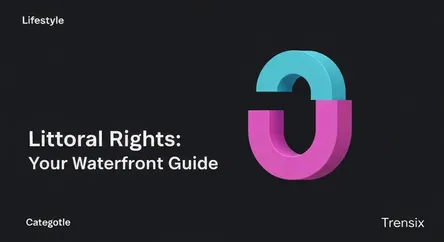Lifestyle
Littoral Rights: Your Waterfront Guide

Discover what littoral rights mean for waterfront property owners. Understand your rights to use and access land next to lakes, seas, and oceans.
What is it?
Littoral rights are the legal rights of a landowner whose property borders a large, navigable body of water, such as an ocean, sea, or lake. Unlike riparian rights, which apply to moving bodies of water like rivers, littoral rights pertain to static water. These rights typically include the ability to access and use the water for recreational purposes like swimming, boating, and fishing. The property boundary for a littoral owner usually extends to the average high-water mark, with the land below that mark being owned by the public or the government.
Why is it trending?
The demand for waterfront properties has surged as people increasingly seek scenic views and recreational lifestyles. This boom makes understanding ownership boundaries and usage rights more critical than ever. Furthermore, environmental factors like climate change and coastal erosion are bringing littoral rights into focus. Shifting shorelines can create complex legal questions about property boundaries, access, and land use, prompting both current owners and prospective buyers to become more educated on the subject to protect their investments.
How does it affect people?
Littoral rights directly impact a homeowner's use and enjoyment of their property. They determine whether an owner can build a dock, pier, or boat launch. These rights also protect a landowner's access to the water and ensure their view is not obstructed by neighbors or public developments. A clear understanding is crucial, as it defines property lines which can fluctuate with water levels. Misinterpreting these rights can lead to significant legal disputes with neighbors, homeowner associations, or government agencies over boundaries, access, and land use.